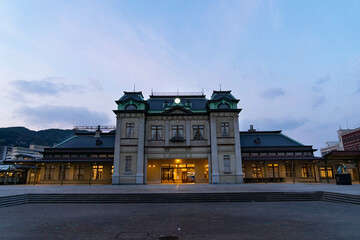
When visitors from home come to Kyushu, one of my most favorite day trips I like to do with them is to visit Mojiko Port, which is not too far from Kitakyushu City.
Mojiko has taken on the moniker of “retro” because of its many well-preserved and historical buildings dating back to the turn of the 20th century.
Upon arrival by train, visitors are greeted by a very traditional train station that dates to 1914 (main photo). The city has been very cognizant about maintaining the original structure and atmosphere that allows visitors to step back in time to an era that largely no longer exists, except in a place like Mojiko.
The renaissance style of the station gives off a nostalgic vibe as travelers walk through the main vestibule to the exit, exploring the side rooms and attached areas along the way. Although modern restrooms are available, one can see the original facilities with all the antique fixtures that have also been preserved.
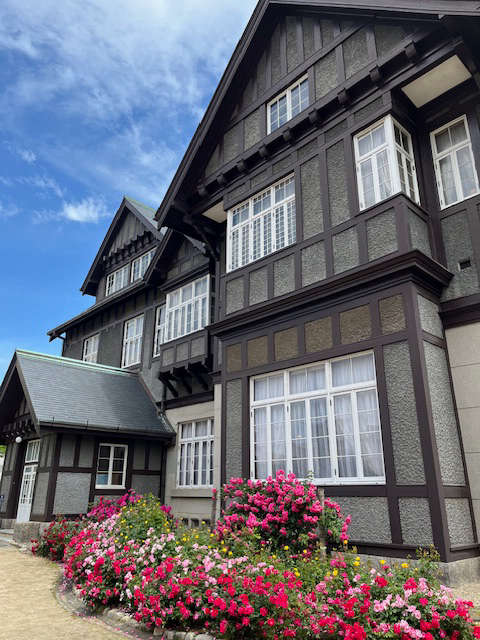
Moji Port is an easily walkable city, and it is compact enough to be able to see the main sights in a matter of a couple of hours. Near the station is the former Moji Mitsui Club building that is unmistakable because of its Western architecture that looks like something out of the Swiss Alps with its half-timber style design and imposing presence (photo).
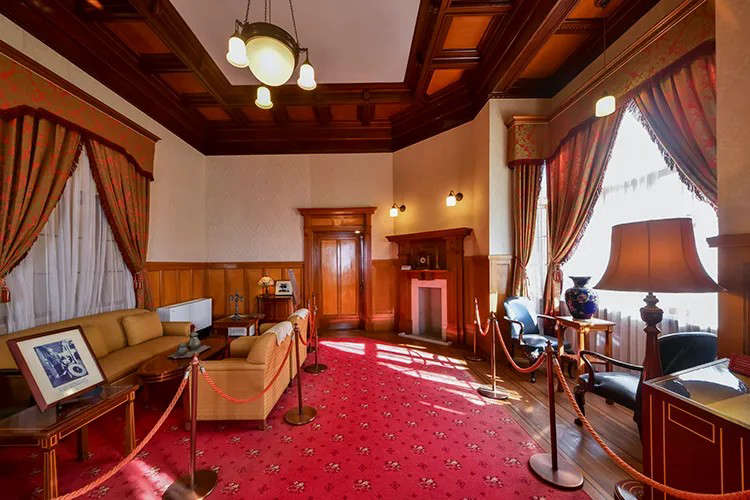
It is designated as a National Important Cultural Property and perhaps is most famous for the fact that Albert Einstein and his wife lodged there in 1922 (the room where they stayed is preserved and named the “Einstein Memorial Room”) (photo).
They have a restaurant on the first floor where diners can eat the famous “Yaki Curry” which is Mojiko Retro’s most famous dish. This local specialty comes with melted cheese, sometimes garnished with eggs, and is baked in an oven. A visit to Mojiko should include eating this type of curry rice that is offered in a variety of local restaurants around the city.
Continuing the architectural tour, as visitors head toward the port area, the former “Osaka Shosen Mercantile Steamship Co. Building” looms large near the water’s edge. Built in 1917, this building has been completely renovated and once served as a waiting area for travelers traveling by ship.
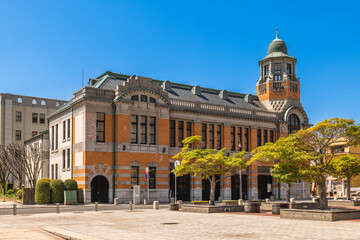
What grabs one’s attention is the beautifully designed octagonal shaped turret with bright orange tiles (photo). Today, visitors can peruse a variety of displays inside and there are benches to sit for a small respite from walking around the city.
The former “Moji Customs Office” is another example of early Showa Era architecture built in 1912. Visitors are treated to an expansive atrium area that has a café and exhibition areas, with a gallery on the second floor. The red brick structure has been completely renovated and the majestic façade of the building figures prominently juxtaposed against other more modern buildings in the area.
Also on the water’s edge is an inside shopping arcade with numerous shops and booths to do souvenir shopping. In fact, there are a number of little shops to browse in around this area.

Another interesting and unique fact about Moji Port is that it is famous for bananas, so visitors will see many banana references when strolling the waterfront. Back during the Meiji (1868-1912) and Taisho (1912-1926) Eras, Moji Port was the receiving point for the importation of bananas from Taiwan.
There were boisterous auctions called “Banana no Tatakiuri” (“Discount Banana Auctions”) where overripe or bruised bananas would be enthiusiastically pitched by humorous sellers to passersby, so this practice became an endearing tradition in Mojiko and remnants of this custom are still seen and referenced to this day. Customers would yell out, “too expensive!” and the vendors would then reply with some sort of witty comeback, making it comical and fun.
When a price was agreed upon, the customer then screamed out “Katta!” or “I’ll take it!”
There is a drawbridge nearby that raises often so there is a good chance you will see it go up and down. It is a pedestrian bridge to get from the waterfront area back toward the station. A very modern building towering 103 meters over the waterfront called the “Mojiko Retro Observation Room” allows visitors a chance to have a bird’s eye view of Mojiko Port, which is great for taking photos.
After touring the Moji Port area, I always take visitors on a short train ride to the entrance of the underground walking tunnel where pedestrians can cross from Kyushu Island to Honshu Island. When exiting the Moji train station, just turn right and walk all the way to the end where you will see another quaint train depot that features a clickity-clackety train that ferries passengers to the entrance of the Kanmon Pedestrian Tunnel where visitors can walk the length of the tunnel underground/underwater (about 780 meters long) from Kyushu to Honshu island.
A three-part ticket can be purchased for a nominal sum that includes the train fare, then the bus fare from the tunnel’s exit to Shimonoseki’s harbor area, and finally the ferry ride from Shimonoseki port back to Moji port.
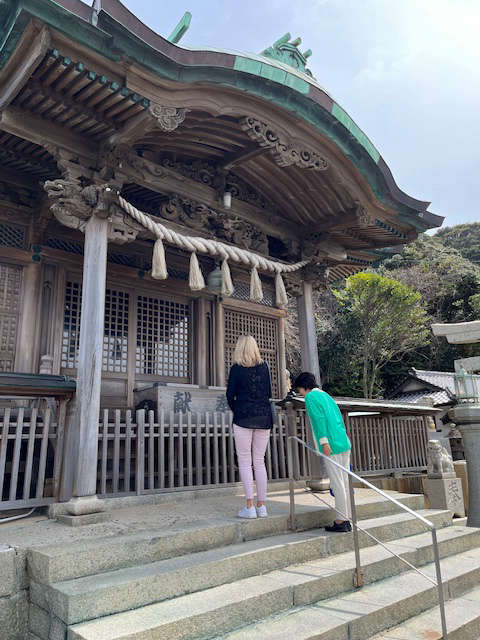
After getting off the train, it is just a short walk to the tunnel’s entrance. A beautiful shrine called Mekari Shrine is well worth stopping at to explore before descending by elevator to walk the tunnel (photo).
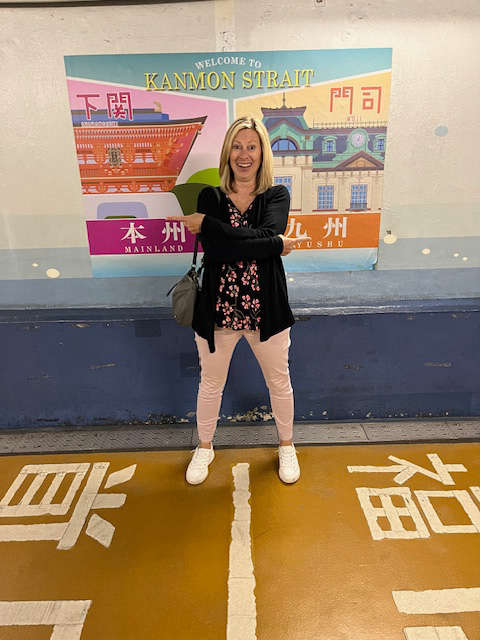
In the center of the tunnel, there is a photo opportunity designating the prefectural borders so one can straddle the two prefectures, which makes for a fun and commemorative photo of the experience (photo of Shelbyville native, Dawn Staker, doing this).
Upon exiting the tunnel and ascending to ground level by elevator (about 60 meters), there is a military display across the street with canons and other military hardware, a lovely Japanese garden, and a gazebo to relax and rest in. A bus stop is there to take you into Shimonoseki.
On the way, and near the Shimonoseki Port, is another beautiful Shinto Shrine worth visiting called Akama Shrine. It is up on a hill and it is fun to explore. Just across the road and down a ways is the Karato Fish Market which is a novel experience for foreign visitors to peruse all the types of seafood and fish that are on display.
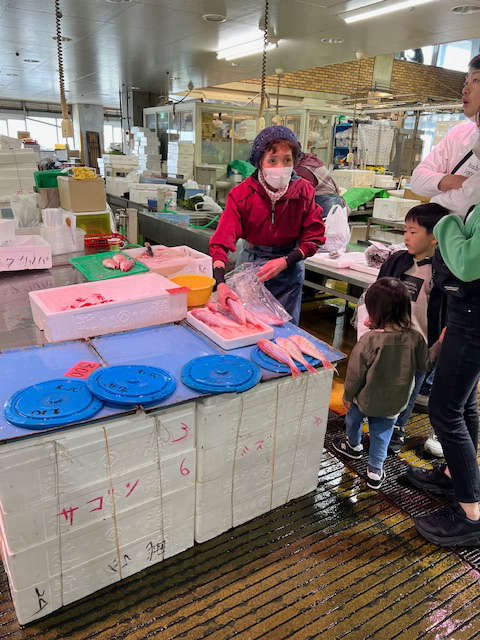
If fresh sushi is your thing, then you will find copious amounts here at the market (photo).
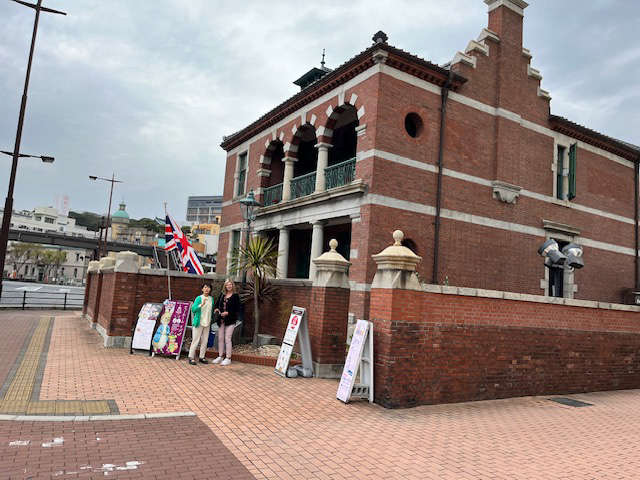
Across from the fish market is the former “British Consulate Building” that offers a very reasonable and lovely afternoon tea on the second floor (photo).

This building has also been meticulously preserved and offers visitors a chance to go back in time to a bygone era (photo). Be sure to make your tea reservation before going, as it fills up quickly and merely walking-in and expecting to get served the Afternoon Tea Service would be too risky to chance.
After a refreshing afternoon tea and rest, then you can make your way back to the port area where you can board a ferry for a short ride back to Moji Port. This day trip is a lot of fun and offers sightseers ample opportunity to experience not only Japanese traditional culture, but also to see historic Meiji Era architecture, coupled with Japanese cuisine and a proper British afternoon tea.
Something for everyone!


 Common Council approves tax abatement plan for potential POET Bioprocessing facility expansion
Common Council approves tax abatement plan for potential POET Bioprocessing facility expansion
 Father arrested after child outdoors in diaper, drugs found in Greenfield apartment
Father arrested after child outdoors in diaper, drugs found in Greenfield apartment
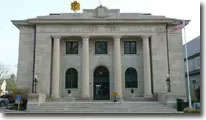 Water Resource Recovery Facility fees rising for first time in more than a decade
Water Resource Recovery Facility fees rising for first time in more than a decade
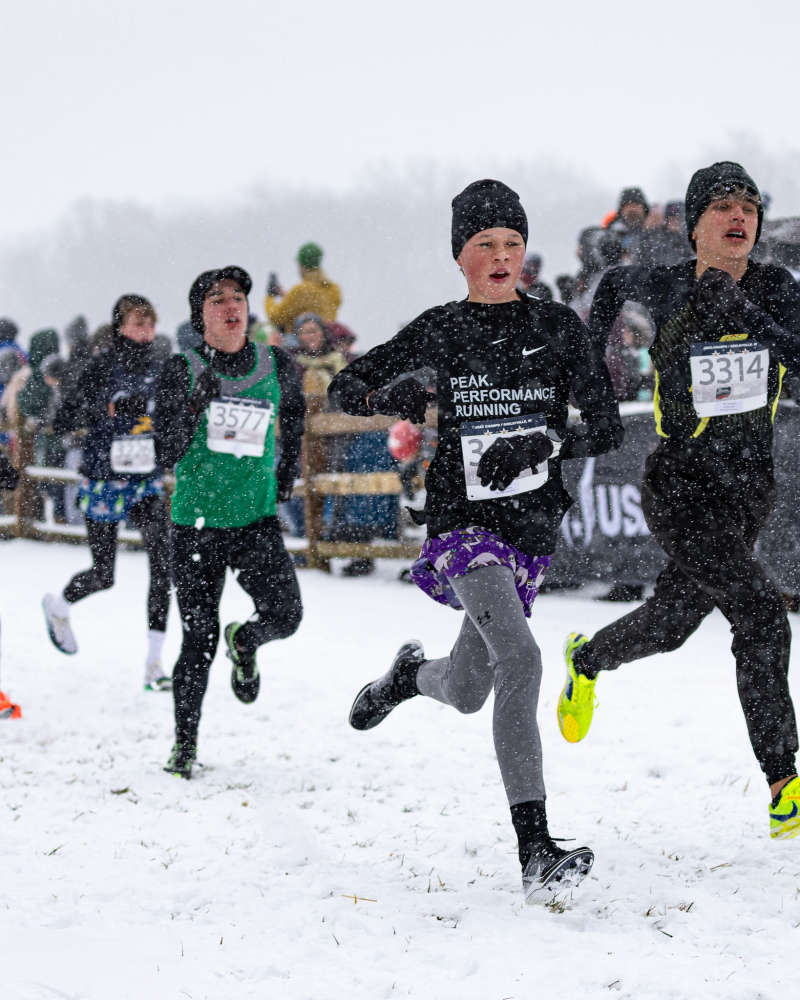 Shelbyville's hospitality on full display during snowy cross country national championship event
Shelbyville's hospitality on full display during snowy cross country national championship event
 Department of Homeland Security launches Worst of the Worst website
Department of Homeland Security launches Worst of the Worst website
 Greenfield PD looking for reported runaway who should be considered armed and dangerous
Greenfield PD looking for reported runaway who should be considered armed and dangerous
 Indiana Department of Workforce Development releases September employment report
Indiana Department of Workforce Development releases September employment report
 Governor Braun takes action to waive hours-of-service regulations for transporting propane
Governor Braun takes action to waive hours-of-service regulations for transporting propane




